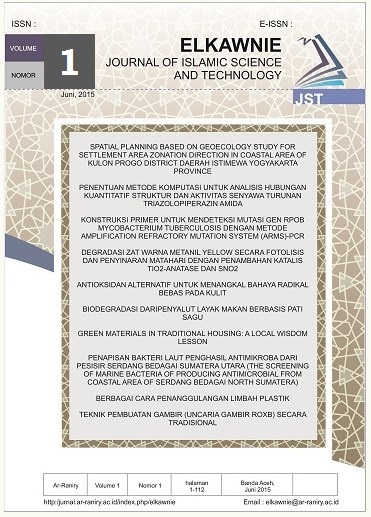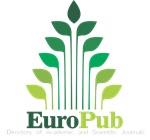Penentuan Metode Komputasi Untuk Analisis Hubungan Kuantitatif Struktur dan Aktivitas Senyawa Turunan Triazolopiperazin Amida
DOI:
https://doi.org/10.22373/ekw.v1i1.515Keywords:
HKSA, triazolopiperazine amide, enzyme DPP IV, semiempiricalAbstract
Penentun metode komputasi untuk analisis hubungan kuantitatif struktur dan aktivitas (HKSA) telah dilakukan pada senyawa turunan triazolopiperazin amida sebagai inhibitor enzim DPP IV yang merupakan penyebab diabetes melitus tipe 2 (DM2). Metode komputasi yang digunakan untuk analisis ini adalah metode semiempirik. Analisis dilakukan dengan pemodelan struktur senyawa turunan triazolopiperazin amida dan perhitungan deskriptor HKSA dilakukan menggunakan program Hyperchem. Parameter yang digunakan adalah pergeseran kimia 13C NMR, panjang ikatan antaratom, sudut ikatan antaratom, dan muatan atom bersih. Hasil perhitungan parameter tersebut dibandingkan dengan data empiris dan hasil perhitungan metode ab initio. Hasil penelitiannya menunjukkan bahwa metode semiempirik yang sesuai untuk analisis HKSA senyawa turunan triazolopiperazin amida adalah AM1 dan PM3.Downloads
Published
Issue
Section
License
Proposed Policy for Journals That Offer Open Access Authors who publish with the Elkawnie journal agree to the following terms:
a. Authors retain copyright and grant the journal right of first publication with the work simultaneously licensed under a Creative Commons Attribution License that allows others to share the work with an acknowledgement of the work's authorship and initial publication in this journal.
b. Authors are able to enter into separate, additional contractual arrangements for the non-exclusive distribution of the journal's published version of the work (e.g., post it to an institutional repository or publish it in a book), with an acknowledgement of its initial publication in this journal.
c. Authors are permitted and encouraged to post their work online (e.g., in institutional repositories or on their website) prior to and during the submission process, as it can lead to productive exchanges, as well as earlier and greater citation of published work (see The Effect of Open Access).

























